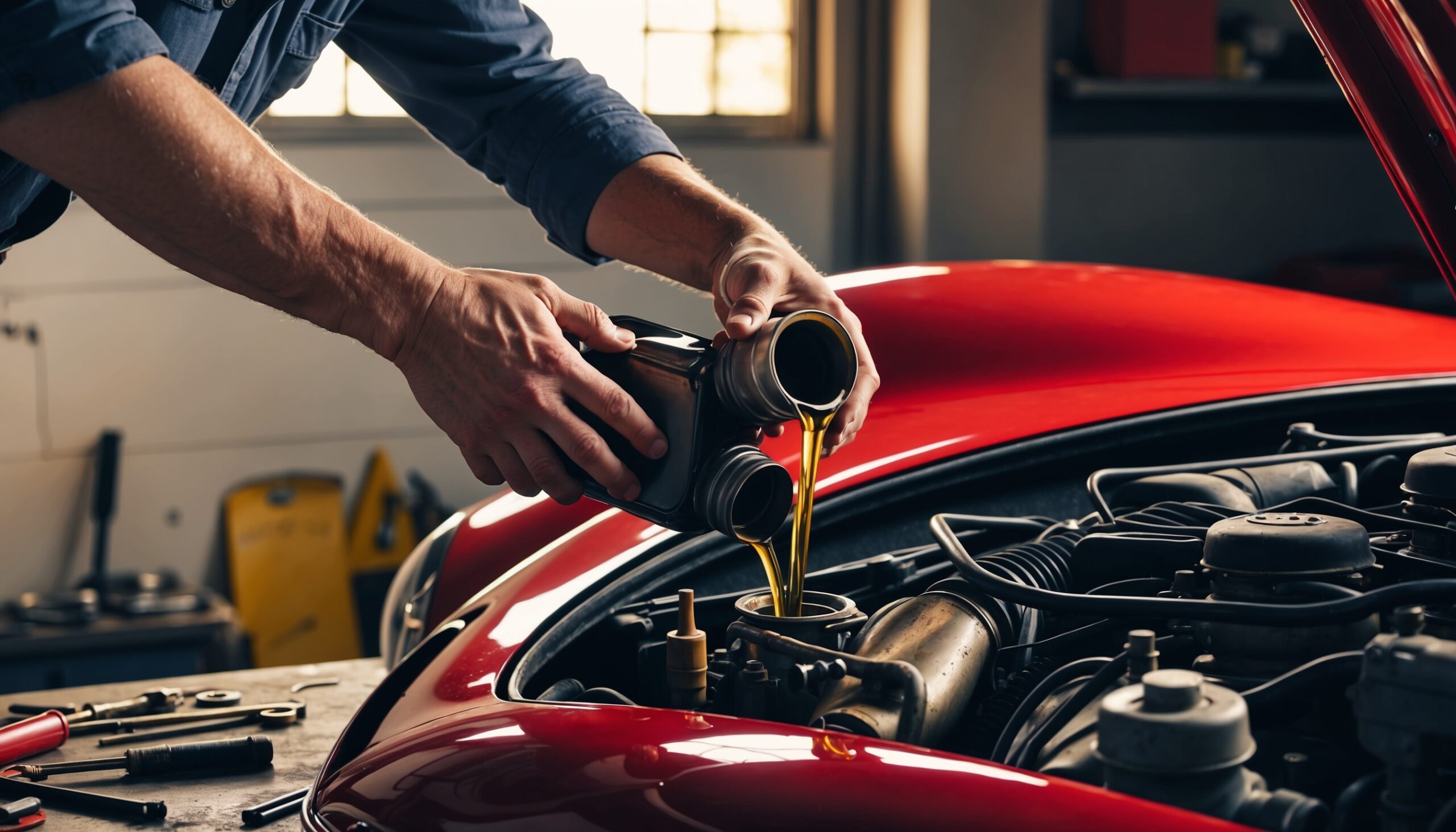12 Car Maintenance Skills Every Adult Should Know
Owning a car brings with it a unique blend of freedom and responsibility. While the open road calls, it also demands a certain level of care and attention to keep your vehicle running smoothly. Whether you’re a seasoned car enthusiast or just someone trying to avoid costly trips to the mechanic, mastering a few essential car maintenance skills can empower you and save you money in the long run. Here at Torque Feed, we believe that every adult should have a solid understanding of their vehicle, so let’s dive into the 12 car maintenance skills every adult should know!
Also Read: What Car Should Be Turned Into A GT3 Racer?
1. Checking and Changing Oil
Oil is the lifeblood of your engine, and knowing how to check and change it is fundamental. Regular oil changes help keep your engine clean and running efficiently. Here’s how to do it:
- Gather your tools: You’ll need an oil filter wrench, a socket wrench, a funnel, an oil catch pan, and of course, the right type of oil for your vehicle.
- Check the oil level: Use the dipstick to see if your oil level is adequate. If it’s low, it’s time for a change.
- Change the oil: Run your engine for a few minutes to warm it up. This helps the oil drain out more easily. Then, locate the oil pan, remove the plug, and let the old oil drain into the catch pan.
- Replace the oil filter: Use the oil filter wrench to remove the old filter, apply a bit of new oil to the gasket of the new filter, and install it.
- Add new oil: Replace the oil drain plug, and using the funnel, pour in the new oil.
- Check for leaks: Start the car and check for any leaks around the oil filter and drain plug.
2. Changing a Flat Tire
A flat tire can happen to anyone, and knowing how to change it can be a real lifesaver. Here’s how to do it:
- Find a safe location: Pull over to a flat, stable area away from traffic.
- Gather your tools: You’ll need a spare tire, a jack, and a lug wrench.
- Loosen the lug nuts: Before lifting the vehicle, use the lug wrench to loosen the nuts, but don’t remove them yet.
- Jack up the car: Place the jack under the vehicle’s jacking point and raise it until the tire is off the ground.
- Remove the flat tire: Now you can remove the loosened lug nuts and take the flat tire off.
- Install the spare: Place the spare tire on the hub, hand-tighten the lug nuts, and then lower the car back to the ground.
- Tighten the lug nuts: Once the car is back on the ground, use the wrench to securely tighten the lug nuts in a crisscross pattern.
3. Jump-Starting a Car
Dead batteries don’t have to ruin your day if you know how to jump-start your car. Here’s a simple guide:
- Get the right equipment: You’ll need jumper cables and a working vehicle.
- Position the vehicles: Park the working vehicle close enough so the cables can reach but not touching.
- Connect the cables: Attach one end of the red cable to the positive terminal of the dead battery, then connect the other end to the positive terminal of the good battery. Next, attach one end of the black cable to the negative terminal of the good battery and the other end to an unpainted metal surface on the dead vehicle.
- Start the working vehicle: Let it run for a few minutes before trying to start the dead vehicle.
- Remove the cables: Once the dead vehicle starts, carefully remove the cables in reverse order.
4. Replacing Windshield Wipers
Good visibility is crucial for safe driving, which is why wiper maintenance is essential. Here’s how to replace your wipers:
- Purchase the right wipers: Check your owner’s manual for the correct size.
- Lift the wiper arm: Gently pull the wiper arm away from the windshield.
- Remove the old wiper: Depending on your vehicle, you may need to press a tab or slide the wiper off.
- Attach the new wiper: Slide the new wiper onto the arm until you hear a click.
- Lower the wiper arm: Carefully place it back against the windshield.
5. Checking Tire Pressure
Proper tire pressure is key to safe driving and fuel efficiency. Here’s how to check it:
- Get a tire pressure gauge: These are inexpensive and can be found at most auto parts stores.
- Check the recommended pressure: Look for the sticker inside the driver’s side door or consult the owner’s manual.
- Remove the valve cap: Unscrew the cap from the tire’s valve stem.
- Press the gauge onto the valve: A reading will appear on the gauge; compare it to the recommended pressure.
- Add or release air as necessary: Use an air compressor to inflate or press the valve to release air.
6. Replacing Headlights and Taillights
Driving with burnt-out lights is not only unsafe but can also get you pulled over. Here’s how to replace them:
- Identify the bulb type: Check your owner’s manual for the correct replacement bulb.
- Access the bulb: Open the hood or trunk depending on whether you’re replacing a headlight or taillight.
- Remove the old bulb: Turn the socket counterclockwise to remove it and pull the old bulb out.
- Install the new bulb: Insert the new bulb into the socket and turn it clockwise to secure it.
- Test the lights: Turn on your headlights or taillights to ensure they’re working.
7. Checking Fluid Levels
Fluids are vital for your vehicle’s operation. Regularly checking them can prevent major issues. Here’s what to check:
- Engine oil: As mentioned before, check the dipstick.
- Coolant: Check the reservoir tank for proper levels, especially in extreme temperatures.
- Brake fluid: This should be near the “full” line in the reservoir.
- Transmission fluid: For automatic transmissions, check the dipstick when the engine is running.
- Power steering fluid: Check the reservoir for the correct level.
8. Cleaning and Maintaining the Battery
Your car’s battery is often an afterthought, but regular maintenance can extend its life. Here’s how to keep it in good shape:
- Inspect for corrosion: Look for any white, ashy deposits on the terminals.
- Clean the terminals: Use a mixture of baking soda and water to scrub the terminals with a brush.
- Tighten connections: Ensure the battery terminals are snug but not overly tight.
- Check the charge: If your battery is more than three years old, consider having it tested.
9. Understanding Your Dashboard Warning Lights
Your dashboard lights provide essential information about your vehicle. Familiarize yourself with them:
- Check engine light: This could indicate a range of issues; don’t ignore it!
- Oil pressure warning: This means your oil pressure is low, which can lead to severe engine damage.
- Battery warning: This indicates an issue with the charging system.
- Tire pressure warning: This alerts you to low tire pressure.
10. Basic Engine Troubleshooting
Understanding some basic engine sounds and behaviors can save you from a costly repair. Here are common issues to look out for:
- Rattling noises: Could indicate a loose part or something more serious.
- Overheating: Check coolant levels and look for leaks.
- Stalling: This could be a sign of fuel or electrical issues.
11. Performing a Brake Check
Your brakes are crucial for safety. Knowing how to check them can keep you safe on the road:
Also Read: Is It Safe To Use A Tonneau Cover When It's Snowing?
- Listen for sounds: Squeaking or grinding noises often indicate worn brake pads.
- Feel for vibrations: If you feel vibrations when braking, it might be time for new rotors.
- Check brake fluid: Ensure it’s at the proper level and clear.
12. Keeping Your Car Clean
Maintaining a clean car not only looks good but can also prevent rust and deterioration. Here’s how to keep your vehicle in top shape:
- Wash regularly: Aim for a wash every two weeks, especially in winter.
- Wax the paint: Waxing protects the paint and keeps it shiny.
- Vacuum the interior: Regularly vacuuming keeps dirt and debris from wearing down the upholstery.

Learning these essential car maintenance skills can make a significant difference in your driving experience and wallet. Whether you’re avoiding costly repairs or simply feeling more confident behind the wheel, being proactive about your vehicle’s upkeep is a smart move. At Torque Feed, we encourage every car owner to invest a little time in understanding their vehicle. Happy driving!













